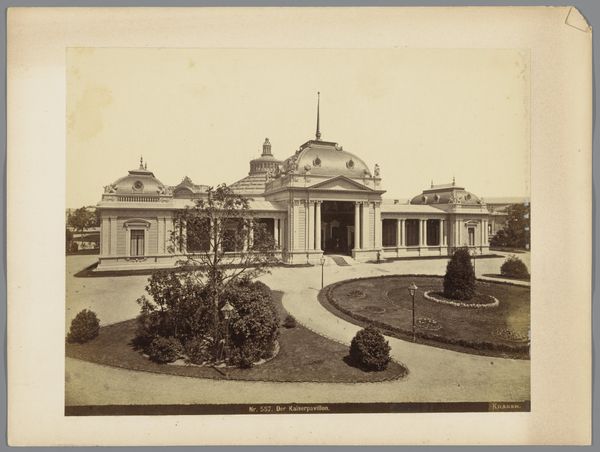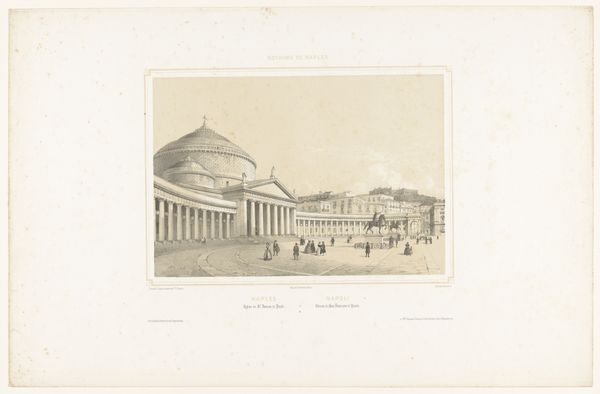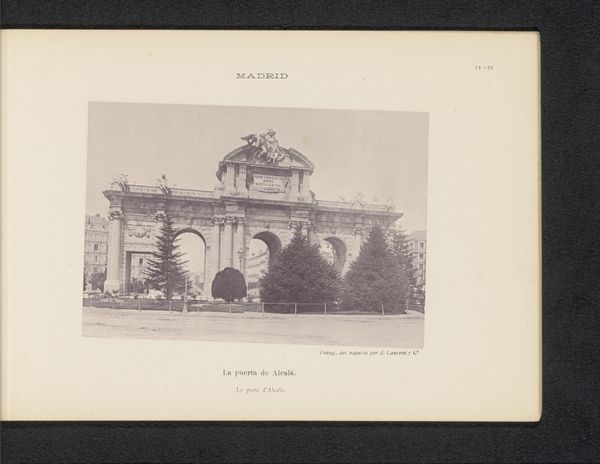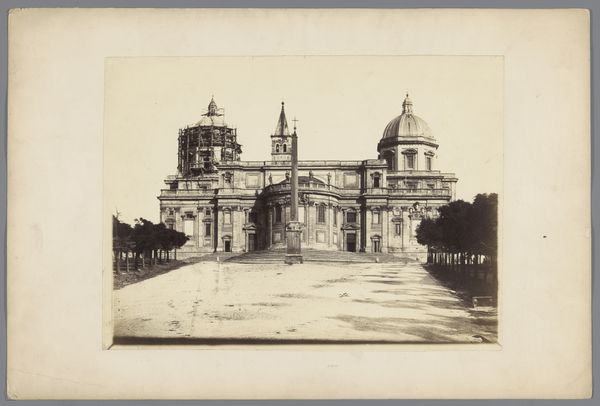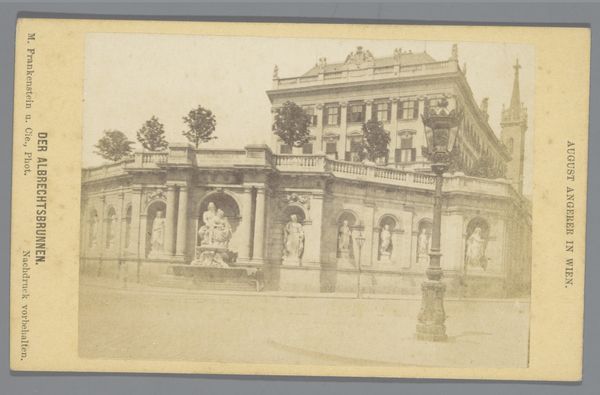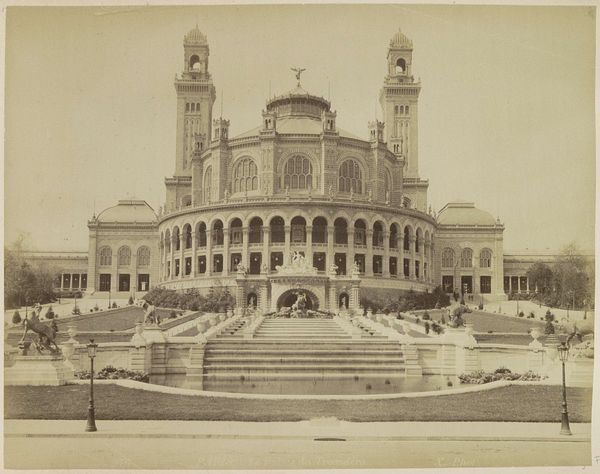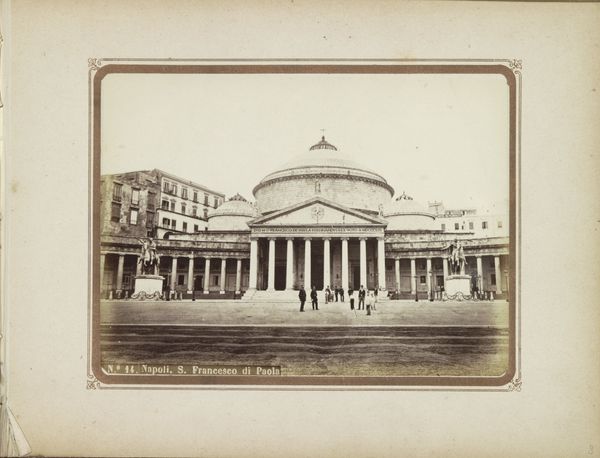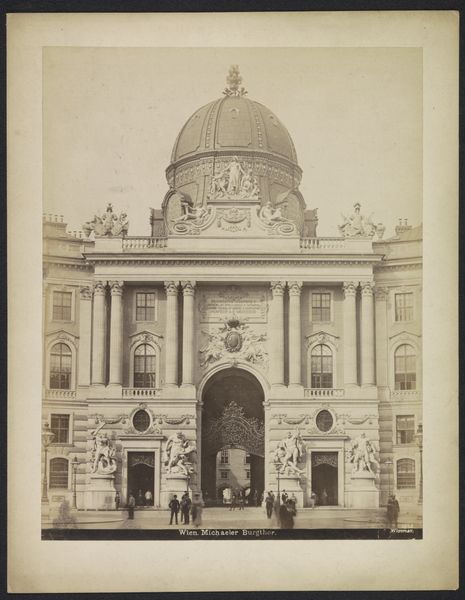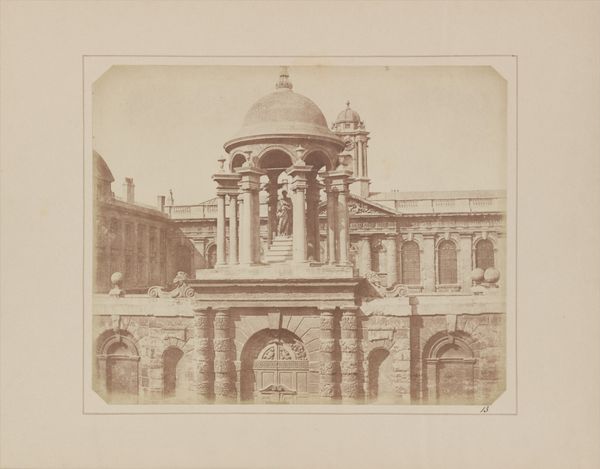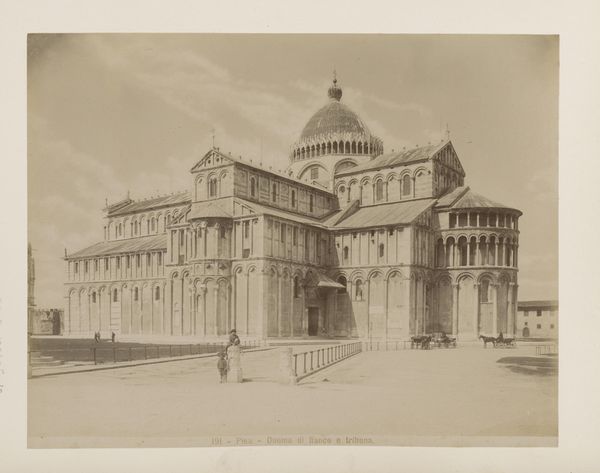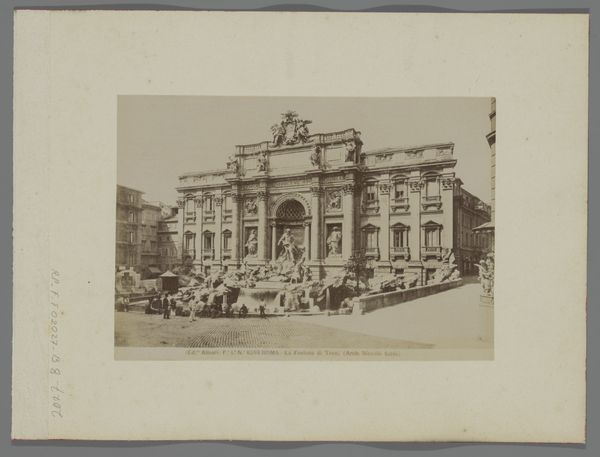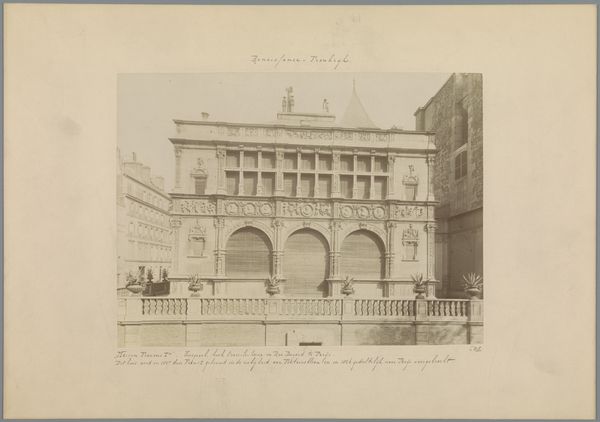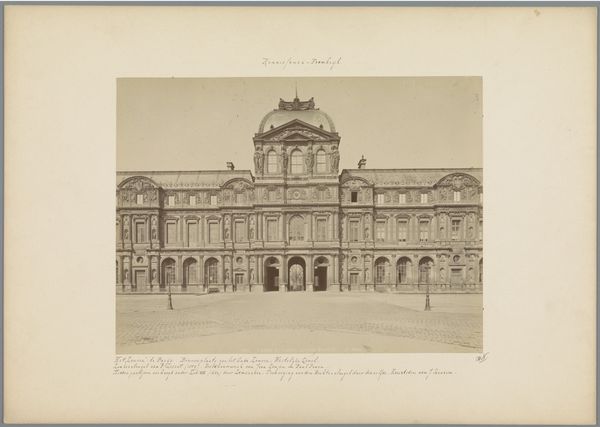
photography, albumen-print, architecture
#
neoclassicism
#
photography
#
cityscape
#
albumen-print
#
architecture
Dimensions: height 194 mm, width 250 mm
Copyright: Rijks Museum: Open Domain
Curator: We’re looking at "Rotunde met hoofdingang op de Wereldtentoonstelling van 1873 te Wenen," taken around 1873-1875. It’s an albumen print, documenting a specific architectural element: the rotunda with its main entrance, from the World's Fair in Vienna. Editor: My immediate impression is grandeur, but also a sense of almost overwhelming artificiality. The photo feels staged, presenting an image of power and progress. Curator: Absolutely. Consider the World's Fair as a project—a material demonstration of industrial and imperial prowess. The albumen print process itself becomes relevant. Think about the labor, the chemicals, the precise choreography required to produce this seemingly straightforward image. Editor: And the way that laborious process, which you rightfully underscore, yields this image intending to represent effortless achievement. The neoclassical architectural style speaks volumes, doesn’t it? Borrowing from antiquity to project an image of timeless authority. But to what end, I wonder. What identity does it perform? Curator: Precisely! It invokes a very specific vision of Europeanness, of enlightened progress. This photo isn't just documenting a building; it's carefully constructing a narrative of dominance and control for both internal European consumption, and external presentation to a global audience. Think about whose stories and perspectives were centered in the 1873 Vienna World's Fair, and whose were marginalized. Editor: Looking closer, it is revealing how meticulously arranged everything is - the pruned shrubbery in front, even the carriages appear posed, hinting at carefully managed experience for attendees. What kind of labor went into that curation as well? Who profited from its arrangement? It’s all rendered smoothly through the albumen print, lending to that totalizing vision you describe. Curator: Indeed, the very architecture becomes an argument about power dynamics and hierarchies of knowledge and value during a crucial era of global expansion. Editor: I appreciate how thinking about the materiality redirects our attention towards a tangible understanding of these power dynamics. Curator: And understanding that helps me contextualize its presence within that moment’s intersectional politics.
Comments
No comments
Be the first to comment and join the conversation on the ultimate creative platform.
